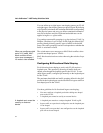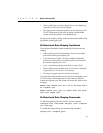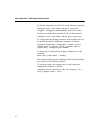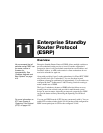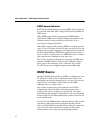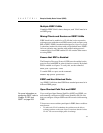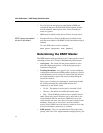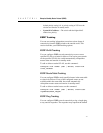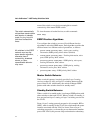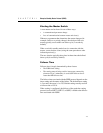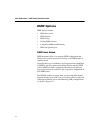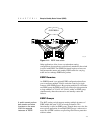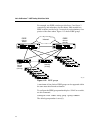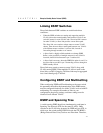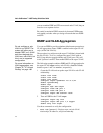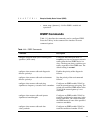
172
Intel
®
NetStructure™ 480T Routing Switch User Guide
route of the switch, or any device meaningful to network
connectivity of the master ESRP switch.
The switch automatically
relinquishes master status
and remains in standby
mode if a
ping keepalive
fails three consecutive
times.
To view the status of tracked devices, use this command:
show esrp
ESRP Election Algorithms
You configure the switch to use one of five different election
algorithms to select the ESRP master. Each algorithm considers the
election factors in a different order of precedence, as follows:
All switches in the ESRP
network must use the
same election algorithm,
otherwise loss of
connectivity, broadcast
storms, or other
unpredictable behavior
may occur.
•
ports-track-priority-mac—Active ports, tracking
information, ESRP priority, MAC address (Default)
•
track-ports-priority-mac—Tracking information, active
ports, ESRP priority, MAC address
•
priority-ports-track-mac—ESRP priority, active ports,
tracking information, MAC address
•
priority-track-ports-mac—ESRP priority, tracking
information, active ports, MAC address
•
priority-mac-only—ESRP priority, MAC address
Master Switch Behavior
When a switch is master, it actively provides Layer 3 routing
services to other VLANs, and Layer 2 switching between all the
ports of that VLAN. Additionally, the switch exchanges ESRP
packets with other switches that are in standby mode.
Standby Switch Behavior
When a switch is in standby mode, it exchanges ESRP packets with
other switches on that same VLAN. When a switch is in standby, it
does not perform Layer 3 routing or Layer 2 switching services for
the VLAN.
From a Layer 3 routing protocol perspective (for example, RIP or
OSPF), when in standby for the VLAN, the switch marks the router
interface associated with the VLAN as down. From a Layer 2
switching perspective, no forwarding occurs between the member
ports of the VLAN; this prevents loops and maintains redundancy.



